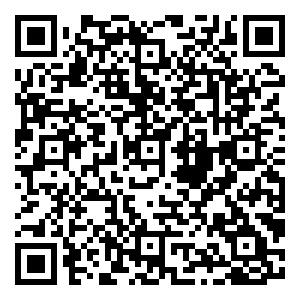|
An Chao, Sepúlveda I, Liu P L F. 2014. Tsunami source and its validation of the 2014 Iquique, Chile, earthquake. Geophysical Research Letters, 41(11):3988-3994
|
|
Aránguiz R, González G, González J, et al. 2016. The 16 September 2015 Chile Tsunami from the post-tsunami survey and numerical modeling perspectives. Pure and Applied Geophysics, 173(2):333-348
|
|
Arcos M E M, LeVeque R J. 2015. Validating velocities in the GeoClaw tsunami model using observations near Hawaii from the 2011 Tohoku tsunami. Pure and Applied Geophysics, 172(3-4):849-867
|
|
Catalán P A, Aránguiz R, González G, et al. 2015. The 1 April, 2014 Pisagua tsunami:observations and modeling. Geophysical Research Letters, 42(8):2918-2925
|
|
Contreras-López M, Winckler P, Sepúlveda I, et al. 2016. Field survey of the 2015 Chile Tsunami with emphasis on coastal wetland and conservation areas. Pure and Applied Geophysics, 173(2):349-367
|
|
DeMets C, Gordon R G, Argus D F. 2010. Geologically current plate motions. Geophysical Journal International, 181(1):1-80
|
|
Heidarzadeh M, Satake K. 2013. Waveform and spectral analyses of the 2011 Japan tsunami records on tide gauge and DART stations across the Pacific Ocean. Pure and Applied Geophysics, 170(6-8):1275-1293
|
|
Heidarzadeh M, Murotani S, Satake K, et al. 2016. Source model of the 16 September 2015 Illapel, Chile, Mw 8.4 earthquake based on teleseismic and tsunami data. Geophysical Research Letters, 43(2):643-650
|
|
Heidarzadeh M, Satake K, Murotani S, et al. 2015. Deep-water characteristics of the trans-Pacific tsunami from the 1 April 2014 Mw 8.2 Iquique, Chile Earthquake. Pure and Applied Geophysics, 172(3-4):719-730
|
|
Kendrick E, Bevis M, Smalley Jr R, et al. 2001. An integrated crustal velocity field for the central Andes. Geochemistry, Geophysics, Geosystems, 2(11):doi: 10.1029/2001GC000191
|
|
LeVeque R J, George D L, Berger M J. 2011. Tsunami modelling with adaptively refined finite volume methods. Acta Numerica, 20:211-289
|
|
Okada Y. 1985. Surface deformation due to shear and tensile faults in a half-space. Bulletin of the Seismological Society of America, 75(4):1135-1154
|
|
Okal E A. 2011. Tsunamigenic earthquakes:past and present milestones. Pure and Applied Geophysics, 168(6-7):969-995
|
|
Rabinovich A B, Candella R N, Thomson R E. 2013. The open ocean energy decay of three recent trans-Pacific tsunamis. Geophysical Research Letters, 40(12):3157-3162
|
|
Ren Zhiyuan, Liu Hua, Wang Benlong, et al. 2014. An investigation on multi-buoy inversion method for tsunami warning system in South China Sea. Journal of Earthquake and Tsunami, 8(3):1440004
|
|
Ren Zhiyuan, Wang Benlong, Fan Tingting, et al. 2013. Numerical analysis of impacts of 2011 Japan Tohoku tsunami on China Coast. Journal of Hydrodynamics, Serise B, 25(4):580-590
|
|
Ren Zhiyuan, Zhao Xi, Liu Hua. 2015. Dispersion effects on tsunami propagation in South China Sea. Journal of Earthquake and Tsunami, 9(5):1540001
|
|
Tang Liujuan, Titov V V, Moore C, et al. 2016. Real-time assessment of the 16 September 2015 Chile Tsunami and implications for near-field forecast. Pure and Applied Geophysics, 173(2):369-387
|
|
Watada S, Kusumoto S, Satake K. 2014. Traveltime delay and initial phase reversal of distant tsunamis coupled with the self-gravitating elastic Earth. Journal of Geophysical Research:Solid Earth, 119(5):4287-4310
|
|
Ye Lingling, Lay T, Kanamori H, et al. 2016. Rapidly estimated seismic source parameters for the 16 September 2015 Illapel, Chile Mw 8.3 Earthquake. Pure and Applied Geophysics, 173(2):321-332
|
|
Yu Fujiang, Yuan Ye, Zhao Lianda, et al. 2011. Evaluation of potential hazards from teletsunami in China:tidal observations of a teletsunami generated by the Chile 8.8 Mw earthquake. Chinese Science Bulletin, 56(11):1108-1116
|

 点击查看大图
点击查看大图



 下载:
下载:

